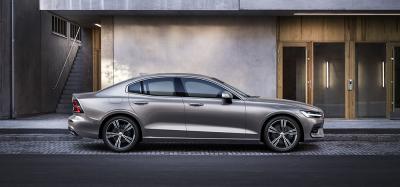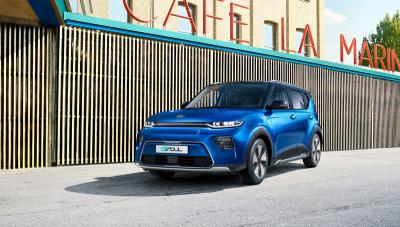Considering it a baby Porsche might seem rather reductive, for a mid-engine, rear-wheel drive sports car, with such a strong emotional impact. The fact is that many “purists”, since its first appearance back in 2005 (coupe version of the Boxster roadster), considered it a bit like a “distant relative” of the iconic 911. As if that wasn't enough to turn up one’s nose, the rear-mounted 4-cylinder engine, as the only option, also played its part.
And yet, although the 2016 model represents the most accessible Porsche from a price point of view (starting from approximately 56,000 Euro), the Cayman doesn’t have much to envy to other models present in the German manufacturer’s range, both in terms of performance, especially the more aggressive S version, as well as for its technological content, definitely in line with the “family’s heritage”.
The 718 symbol (found also on the Boxster as both share the same platform) has a very specific meaning for the Cayman and for Porsche in general. It calls to mind the splendors of the homonymous historical model, which, during the 60s, played a key role in motorsports success, with significant results in the 24 hours of Le Mans, the Targa Florio and many other international competitions.
UNCOMPROMISING TWO-SEATER
The new front design, with prominent air intakes and low side profile underscores the boost in dynamics. The nose has a much sharper profile, which gives the front end a wider and more masculine appearance. Rounding off the front end of the 718 Cayman are the significantly larger cooling air intakes and bi-xenon headlights in their new design with integrated LED daytime running lights. LED headlights with four-point daytime running lights are available as a new option. Viewed from the side, the new sport coupe reveals its striking wings and side sills. The redesigned rear has a much wider look and the tail lights have been completely redesigned and are distinguished by three-dimensional technology. All balanced by clean lines and integrated with the Porsche badge and equipped with flashy 18, 19 or 20 inch multi-spoke alloy wheels, according to the version.
The small interior layout, with jet-fighter style wrap-around panels, are a clear remainder that you are sitting in a two-seater sports coupe, although not too many sacrifices in terms of comfort are required. Round tachometer and speedometer, multifunction steering wheel and a dashboard generously filled with indicators and buttons enhance an interior design that speaks volumes about the hi-performance feel of the car, giving the driver the possibility of setting the car’s parameters through a user-friendly Sports Response module. The PCM (Porsche Communication Management) as a standard feature, guarantees extensive connectivity options, such as mobile phone preparation, audio interfaces and a 150-watt Sound Package Plus which are all part of the infotainment package, manageable through a practical touch screen, from which a mobile speakerphone system can be managed, and, as optional (a pity considering the not exactly economical price of the car) the navigation module with voice control.
As expected, baggage space is quite in line with the category, with two compartments under the front hood and rear trunk, with a total space of 334 liters almost evenly divided.
FULL TURBO AHEAD
The new Cayman engine layout lost a couple of cylinders, as a result of the recent upgrade, but gained a turbocharger. If 300hp developed from the water cooled two liter engine – with a torque of up to 380 Nm (plus 90 Nm), available between 1,950 rpm and 4,500 rpm – aren’t enough to get the 1300kg Cayman off to a bolting start, then try the S version with its 2.5 liter boxer and 50 extra hp – with a torque of up to 420 Nm (an extra 50 Nm) between 1,900 and 4,500 rpm – capable of guaranteeing even greater performance. All this thanks to a turbocharger with variable turbine geometry (VTG), a technology so far used exclusively in the 911 Turbo, which can propel the Cayman from 0-100 in 4,2 seconds ( with PDK gearbox and sport+ configuration), against the 4,7 seconds scored by the 300hp 2liter version of the 718, with top speeds in the range of 285 or 275 km/h respectively, enough to allow an over-the-top driving experience in any situation, traffic law permitting. And when you’re not stepping on the gas, the Cayman still provides a comfortable and balanced ride, making it possible to enjoy long and relaxing journeys, thanks to the four independent wheel suspensions, able to absorb most of the irregularities found on the road. The front wheels have additional springs and vibration dampers, to reduce pitch and roll during cornering and acceleration. On the other hand, when looking for strong emotions, the little German sports car provides a go-kart like driving feeling, with direct steering response, despite its electric power drive, but docile and lightweight when maneuvering for a parking place, thanks to a turning circle just under 11 meters. The credits for such dynamic behavior must be shared with the seven-speed PDK dual-clutch transmission (Porsche Doppelkupplung), offered as an option and much more fun to drive, thanks to the Sport Response button, and more economical than the six-speed manual transmission fitted as standard. Braking distances are adequate to high safety standards, managed by an oversized braking system, with generous 330mm ventilated discs (299 mm in the rear) and new four-piston calipers similar to those used on the Porsche 911 Carrera. Furthermore, the entire 718 range is equipped with a multi-collision braking system that triggers automatically upon the first impact and then continues braking until the vehicle comes to a halt, thereby reducing the consequences of any accident.
Normally, whoever drives a Porsche doesn’t worry too much when it comes to re-fuelling, but will still appreciate the efficiency of the start / stop function, which switches off the engine when slowing down, while in slow moving traffic the system, coupled to the PDK, allows the vehicle to move without having to use the gas. All this translates in an average mileage of 15km /liter (13.7 km / liter for the Cayman S PDK), as long as the gas isn’t pressed down too hard.
The contact patch can rely on the best balance between grip and driving precision, guaranteed by a mixed tires set up between front and rear wheels 235 and 265 mm wide respectively, with aspect ratios between 45 and 35 % depending on the diameter of the rims, whether 18, 19 or 20 inches.The PASM chassis - Porsche Active Suspension Management - uses a constantly active electronic damping system, which manages each wheel’s response according to driving conditions and road surface in two different modes, Normal and Sport (Sport Plus and Individual are programmable only with the optional Sport Chrono package) selectable from the driver's seat. Another available option is PASM with a ten-millimeter lowering of the ride height and additionally in the S model PASM sport suspension with a 20-millimeter lowering of the ride height for the first time, further emphasizing the Cayman’s hi-performance qualities and driving precision even at high speeds. In other words, ground clearance almost non-existent and no space for snow chains. Hence, seasonal tire replacement here is a must.

Multi-spoke sports rims 18, 19 and 20 inch equipped with low profile tires of different sizes between front and rear axles, 235 and 265 mm, respectively, and aspect ratios of 45, 40 and 35%.

-

The interior designed for two passengers only, is available, on request, with leather upholstery, among the various features we find PCM touchscreen interface and navigation system with voice control

The new Cayman shares the same engine range found on the Boxster, a 300hp 2liter turbocharged and a 350hp 2.5 liter turbocharged four cylinders boxer engines









